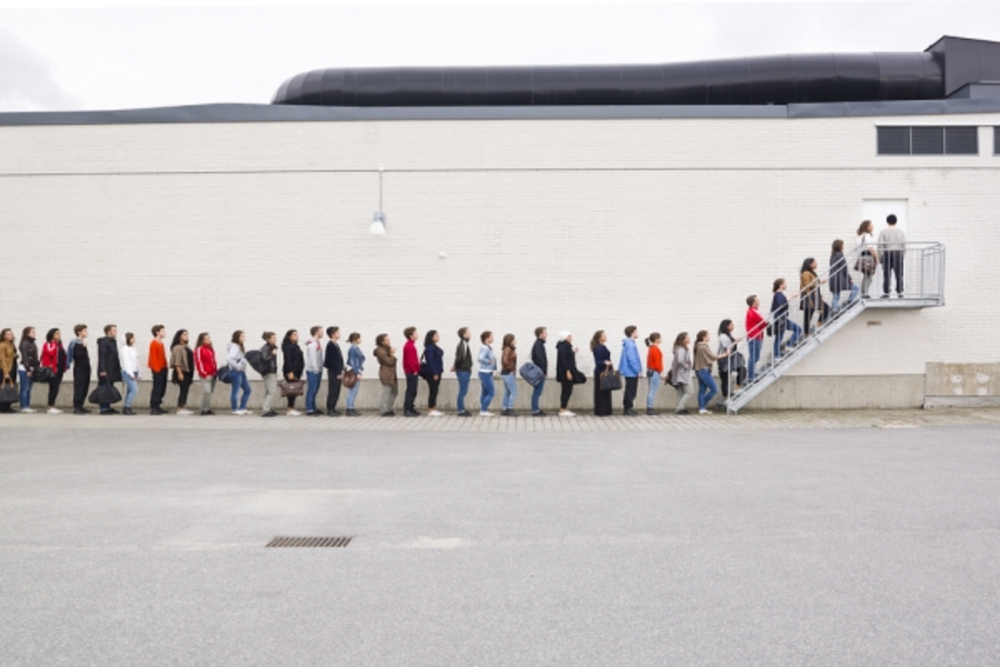I dread Advertising Week. Every September the agenda for the event makes the staff rounds, and I’m always hoping I’m at a postal conference in Omaha that week. It’s not that the programs are subpar. Hardly. There are some very top people and very hot topics. Just try getting into them. When it comes to the hallowed digital goal of customer engagement, like good ad people, the Advertising Week staff is expert at getting the customer’s attention and converting on their registration page. They’re not so good, however, at consummating the deal by engaging with the customer inside the auditorium.
Last year I showed up at B.B.King’s Blues Club in Times Square to catch a couple of cats wail on mobile email, but was told, along with a score of other attendees, to wait outside. “You can’t get in until the people in there now leave,” I was told by a cavalier Advertising Week staffer, who then continued to chat on her cell phone. Fifteen minutes passed, then 20, and I asked her again when we could go in. “Oh, the session started already,” came her cheery reply.
This Monday I wanted to see the session featuring Google’s president and the new media chief of Anheuser-Busch InBev. Wise to the event manager’s game, which is to not only make attendees pay but work for a seat at sessions, I sat through the previous program expecting to hold my seat for the Google show. But A-Week got the jump on me. They cleared the room and asked people to line up for Google. I ended up calling it a day. If I have to wait in a line that goes up and down two staircases, out the door of the Times Building, and into the plaza of the Port Authority, Eric Clapton better damn well be who’s waiting for me onstage.
With incredibly viral videos and social media stunts that penetrate deeply into popular culture, some digital marketers could make an argument to consider themselves rock stars. But whether it’s video, digital display, TV, or print ads or direct mail, all marketing exists for one abiding reason: to get people to buy stuff.
Still, you won’t see sessions on direct mail or catalog advertising at this event. That would be way, way below the cool factor of such sessions as “Celebrity Storytelling in a Social World.” When one panel member raved how real-time metrics let him instantly choose the right things to do for his clients, I wondered how often those metrics led him to a direct mail campaign, or if he’d ever seen how the efficacy of boring old offline channels perform in an arena that clients think is the coolest: added revenue.
Here, Advertising Week attendees, are some statistics to peruse while you’re cooling your heels on a New York Times staircase, waiting to “Thrive with Arianna Huffington”:
- For those describing themselves as direct marketers in 2013 (and even at A-Week, everybody’s a direct marketer these days), direct mail campaigns represented their largest single marketing expenditures at $41.2 billion, the CMO Council reports.
- According to the Direct Marketing Association, 43% of people aged 25 to 34 read standard ad and financial mail pieces immediately after fetching them from the mailbox. That percentage steadily rises as adults age.
- Conversion rates for direct mail blow all others out of the water. The CMO Council charted them at between 1.1% and 1.4% versus 0.03% for email, 0.04% for display ads, and 0.2% for paid search.
- And social media may be fun, but does it pay? Monetate’s “Ecommerce Quarterly” study for Q4 2013 tracked conversion rates of 3.84% for email, 2.28% for search, and 0.74% for social.
Meantime, if any of you know of any good B2B email seminars in C or D metros next September, please email me.








